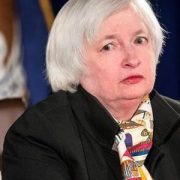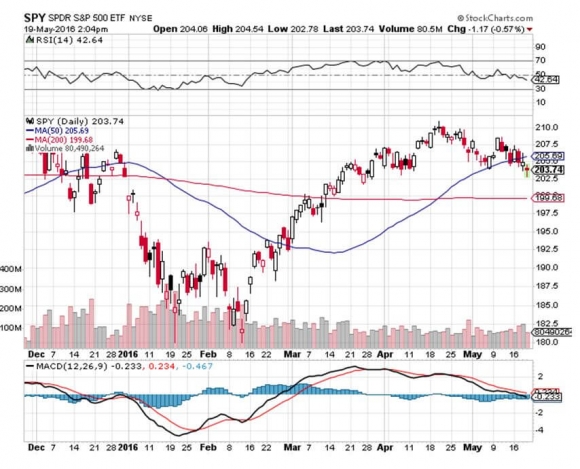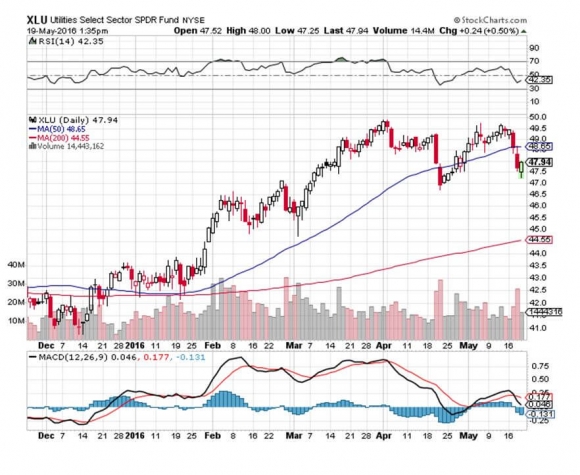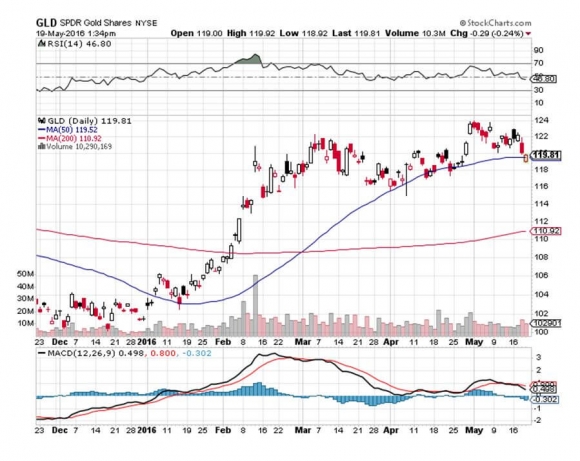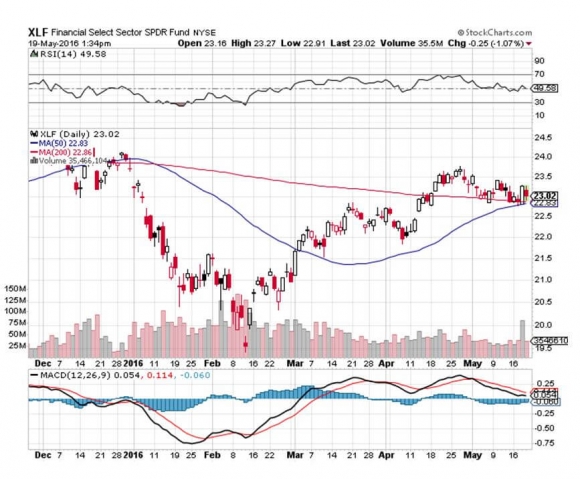Boy, the Federal Reserve must really hate traders.
Once again, a flip flopping Fed has reversed its message to the market, suggesting that interest rates will rise as soon as its June 17 meeting.
The news came out with the release of its April Open Committee Meeting minutes. It?s clear that as soon as financial markets stopped crashing, a rate rise was back on the table.
The revelation pulled the rug out from traders who were expecting no move on interest rates until December at the earliest.
Markets were stunned senseless by the surprise for a few minutes. Then, the lower interest plays, like gold (GLD) and utilities (XLU) started to crater, while rising rate plays, such as the banks (XLF), had a banner day.
This was a big problem, as most hedge funds had overweight positions in the yellow metal, one of the top performing assets of 2016. Those long gold stocks (GDX), (ABX) particularly took it in the shorts.
Fortunately, I made more than ample profits on my short positions in the S&P 500 (SPY), the Russell 2000, and the Japanese yen (FXY), (YCS) to offset any losses in the barbarous relic.
That is why the word ?Hedge? is in the Mad Hedge Fund Trader. I?m sorry, but I?m spoiled. I like to make money ALL the time!
Yesterday?s developments still left our May performance at an envious 10.62%. The 2016 year-to-date number stands at 11.83%. Our five-year gain stands at 204.08%.
These are numbers any manager would kill for in this tempestuous trading year. The harder I work, the luckier I get.
The great irony here is that I don?t believe the Fed will raise rates in June. The numbers from the economy don?t justify it. A US Q1 GDP growth rate of a piddling 0.5% is nothing to write home about.
And even the Fed won?t believe in a rate rise if the UK leaves the European Community, a distinct possibility on June 23.
That means stocks will continue to discount a rate rise for another month, and then not get it. That translates into selling every rally in stocks until then and then covering your shorts mid month.
The 200-day moving average beckons at $199.68, then the February 11 low at $181.20.
The problem is that central banks have been known to make mistakes, especially ours.

